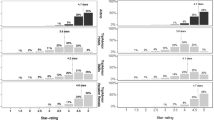Abstract
Friend-to-Friend networks are a form of Peer-to-Peer networks that provide anonymity of the users who share data. Turtle is an example of such a network, where a peer only connects to real life friends. In this paper we propose an extension of Turtle for connecting to other nodes based on their reputation. Furthermore, we use trust management to dynamically adjust this reputation based on the honest or malicious behaviour of all connected peers. Using these techniques, a node is able to create links to other nodes and identify possible misbehaving friends. Finally, we present simulation results of a reputation based Turtle Friend-to-Friend network.








Similar content being viewed by others
References
Napster (2008) Napster homepage. http://www.napster.com
Gnutella (2008) Gnutella homepage. http://www.gnutella.com
Kazaa (2008) Kazaa homepage. http://www.kazaa.com
Christensen C, Aina T, Stainforth D (2005) The challenge of volunteer computing with lengthy climate model simulations. In: Proc of the 1st IEEE conference on e-science and grid computing. IEEE, Piscataway, pp 8–15
Clarke I, Sandberg O, Wiley B, Hong TW (2000) Freenet: a distributed anonymous information storage and retrieval system. In: Proc. of the ICSI workshop on design issues in anonymity and unobservability. Springer, Heidelberg, pp 46–66
Popescu BC, Crispo B, Tanenbaum AS (2004) Safe and private data sharing with turtle: friends team-up and beat the system. In: Proc of the 12th Cambridge international workshop on security protocols, Cambridge, 26–28 April 2004, pp 213–220
Kamvar S, Schlosser M, Garcia-Molina H (2003) Eigenrep: reputation management in peer-to-peer networks. In: Proc. of the 12th international world wide web conference (WWW 2003), 20–24 May 2003, Budapest
Gupta M, Judge P, Ammar M (2003) A reputation system for peer-to-peer networks. In: Proc of the 13th international workshop on network and operating systems support for digital audio and video. ACM, New York, pp 144–152
Sarmenta LFG (2002) Sabotage-tolerance mechanisms for volunteer computing systems. Future Gener Comput Syst 18(4):561–572
Parhami B (1994) Voting algorithms. IEEE Trans Reliab 43(4):617–629
Yao AC-C (1982) Protocols for secure computations (extended abstract). In: Proc of the 23rd annual ieee symposium on foundations of computer science (FOCS 1982). IEEE, Piscataway, pp 160–164
Lindell Y, Pinkas B (2004) A proof of Yao’s protocol for secure two-party computation. Tech rep, Cryptology ePrint Archive, Report 2004/175
Schneier B (1996) Applied cryptography. Wiley, New York, tUB-HH: TIK-806
Diffie W, Hellman ME (1976) New directions in cryptography. IEEE Trans Inf Theory IT 22(6):644–654
Douceur JR (2002) The sybil attack. In: Druschel P, Kaashoek MF, Rowstron AIT (eds) Proc of the international workshop on peer-to-peer systems (IPTPS02), Lecture Notes in Computer Science, vol 2429. Springer, Heidelberg, pp 251–260
Dinger J, Hartenstein H (2006) Defending the sybil attack in p2p networks: taxonomy, challenges, and a proposal for self-registration. In: ARES, Vienna, 20–22 April 2006, pp 756–763
Diffie W, van Oorschot PC, Wiener MJ (1992) Authentication and authenticated key exchanges. Des Codes Cryptogr 2(2):107–125
Dellarocas C (2000) Immunizing online reputation reporting systems against unfair ratings and discriminatory behavior. In: Proc of the 2nd ACM conference on electronic commerce. ACM, New York, pp 150–157
Lam SK, Riedl J (2004) Shilling recommender systems for fun and profit. In: WWW, New York, 17–20 May 2004, pp 393–402
Zerfiridis K, Karatza H (2004) File distribution using a peer-to-peer network—a simulation study. J Syst Softw 73(1):31–44
Adar E, Huberman B (2000) Free riding on gnutella, vol 5(number 10). First Monday
Verizon Business (2008) Virus infected file sharing at kazaa. https://www.trusecure.com/cgi-bin/download.cgi?ESCD=W0152&file=wp_2004Virus.pdf. Acessed 29 December 2003
Author information
Authors and Affiliations
Corresponding author
Rights and permissions
About this article
Cite this article
Loukos, F., Karatza, H.D. Reputation based friend-to-friend networks. Peer-to-Peer Netw. Appl. 2, 13–23 (2009). https://doi.org/10.1007/s12083-008-0019-1
Received:
Accepted:
Published:
Issue Date:
DOI: https://doi.org/10.1007/s12083-008-0019-1




